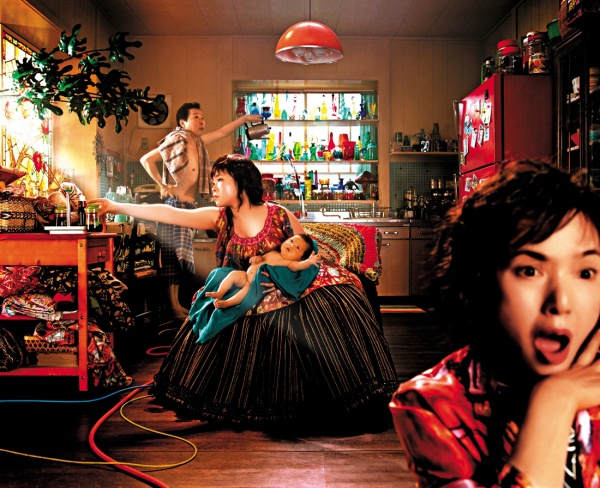
Faces of a Fig Tree (Ichijiku No Kao)
Directed by Kaori Momoi
This year’s festival is subtitled Past/Present and is particularly interested in looking at the ways in which women filmmakers reveal how the past has shaped the present. Would you say today’s challenges and obstacles for women filmmakers have changed? And how do you think the situation in your country is in particular when compared to other countries?
I often joke that “ A Japanese man prefers a woman he can take down” but in Japan, which has a long history of chauvinism, women–let alone women filmmakers–still have a difficult time in the work place. As proof of that, there is not one female director in the Japanese major movie industry. I feel that now and from now on, with a rooted coed system (where men experience being bested academically by women), young men find it easier to work with and share a respectful relationship with women. As an actress I wrote scripts on set and participated creatively as an actor thinking to become a filmmaker. The time for female filmmakers has only really just begun. I can assure you that from here on out there will be a deluge of women artists.
Why are you a filmmaker and how does working with film help you tell your story?
I think there is a certain something that films express better than other arts such as literature or music. It’s something subconscious or intuitive that a living being gives birth to. This instantaneous feeling that emerges from my body keeps me making films.
The world in which the Kadowaki family lives seems at the border of reality and fiction. Their environment appears dominated by fantasy while all the characters are going through intense transformation. What kind of aesthetic and style did you use to enhance this sort of surrealism?
To die, like a television switching off, suddenly causes the picture of daily life to disappear. Consequently, to live, means partaking in daily living. Daily life doesn’t contain a lot of big surprises; if we don’t look at it through our memories or other people’s eyes, it doesn’t hit home that we’re actually happy. The themes in this film are Why can’t we feel the happiness we have now’ and isn’t it a let-down not to be able to?” I wanted to show people that calmly eating around the dinner table, if you stop to look at it, is beautiful.
You are well known as an established actress. With Faces of a Fig Tree you directed a film yourself for the first time. Did the experience of directing change your view of acting?
Actors are an entity that neither transform nor perform. I found that I wanted them to lend their talents and become creators on set.
Could you choose your favorite scene in your film or an anecdote related to it and tell us what you particularly like about it?
During filming, I never explained to the actors what scene we were shooting. I wrote the script, but the majority of the time the actors spoke in the scene as a response to my lines and instructions. Then it was a matter of arriving back at the lines from the script.
I like the dining table where the family is eating croquettes after the father has died. The children knew that they were eating at the table after their father’s death, but with the mother’s line “ Your father sure is late tonight” it seems as though they become completely unsure of whether he is even dead anymore and they just continue eating silently. I think of them as children clumsily trying to support their mother, who’s grown a little bit funny in the head after the death of her husband, through the mundane daily routine of eating. That’s my favorite scene.
Translated from Japanese by Robert Behnen, edited by C. Marran
Get Walker Reader in your inbox. Sign up to receive first word about our original videos, commissioned essays, curatorial perspectives, and artist interviews.